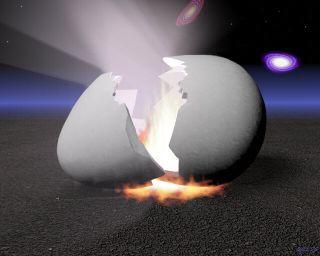1.On page 17, Bourriaud begins to define what he sees as the next step for art for everyone in the world. He says " today there remains the task..of inventing modes of thought and artistic practices that would this time be directly informed by Africa, Latin America, or Asia and would integrate ways of thinking and acting current in, say Nunavut, Lagos, or Bulgaria. This time around, to have an impact, African tradition won't have to influence new Dadaists in a furture Zurich, nor will Japanese print art have to rely on inspiring tomorrow's Manets. Today's artists, whatever latitiudes they live in, have the task of envisaging what would be the first truly worldwide culture.'
He begins by representing the unspoken for groups of previous movements, then proceeds to again speak for them, and all artists, by giving them a prescribed task, the task of 'envisaging what would be the first truly worldwide culture.' Why do artists have to do that? Is the role of artist to figure out what a culture needs, or what theorists or critics want to see, and then to make it? Isn't it more mysterious than that? More interesting, more creative?
My answer is art making is more interesting and creative than answering a prescribed need. As humans we all seek to communicate what we think is important, to grow it, to make it more. Everything is trying hard to stay alive, even ideas, even Nicolas Bourraud's ideas. He is a brilliant observer, theorist and critic and he has ideas about what needs to happen. Another approach would be to watch where things lead, to observe, to aknowlege that we don't know where art is going but to observe what is emerging. Art, after all, isn't life or death. We can afford to let it be what it is, because it will anyway.
Bourraud writes a great deal about the impending globalization. If that is the case, impending globalization, then why the worry about finding an art that communicates it? Left to its own device, won't art reflect its world just fine?
2. Why did Bourriaud choose the image of a plant if he is rather against the root? Why not choose a spider, that makes a web? On page 21 he states 'it's roots that make individuals suffer; in our globalized world, they persist like phantom limbs after amputation, causing pain impossible to treat, since they affect something that no longer exists.' Bourriaud's experience of the root is a valid one, but perhaps there is more than suffering to a root? Ideas such as grounding and nourishment? The radicant picks up and puts down roots as it goes, and I have moved enough times to think that sounds like more suffering than staying put, or detatching once and for all. In terms of metaphor, this continual wandering may be closer to the present day experience, what with travel, television and the internet, but I also believe people can be fond of their roots. Visiting a place is not the same as putting roots there.
3.“Postmodern multiculturalism has failed to invent an alternative to modernist universalism.” p 35 Was it trying to invent or describe something? Or was it just at one stage in the game of noticing things needed to change or were changing?
I don't know enough about postmodernism to answer my own question. But it is almost the same as my first question,if it were trying to invent a new way of being; that is, Is the job of art criticism or theory to name a movement or shape it? Or is that just a manifesto? Are manifestos effective? Or do they just preach to the choir?
4.My favorite observation: “The anticolonial model, which permeates cultural studies and discourses on art, undermines the foundations of modernism without, however, replacing them with anything other than that very gesture of hollowing it out; that is to say, with emptiness.” P. 35
This is a helpful observation that provides good information. I think Bourriaud should leave it there. Let the artists come up with a new model themselves, the way people do.
Bourriaud also says "and in that tireless deconstruction of the Western white male voice, we scarcely hear anything anymore but the soft voice of an aimless negativity."p 36
I say, so what? Maybe we’re not over it yet. And maybe it’s all to easy to say it’s a ‘tireless deconstruction’ when you yourself are a white male. "Are there many blacks or women feeling tired of it?
5.Bourriaud talks about Julie Mehretu by saying "Faced with a reality that cannot be grasped by representational pictorial means, the abstract, diagrammatic, statistical, and infographic lexica allows us to cause the furtive forms of command and the structure of our political reality to appear." He later writes "To take abstraction, which has become an ideological instrument, and draw it onto the side of singularity in this way is a plastic operation that possesses a powerful political potential. If the codes of the dominant representation of the world are based in abstraction, that is because abstraction is the very language of inevitability." p 59. I am reading this to mean, she uses marks and symbols that are common to charts and maps that are made to explain certain things. She, however, uses them to create or explain her situation, her interior city. I find Mehretu's work very powerful, but is what makes it fit in with Bourriaud's ideas of flexibility, mobility, rootlessness and connection the fact that she uses those symbols or types of marks in some of her work? Once again, I wonder if he finds any value in a painting or print of Mehretu's that doesn't use those symbols? I guess it is pretty indefinable, what makes something Altermodern, or at least it takes a book to define it. I also don't understand how abstraction is the 'very language of inevitability' or how Mehretu's work has 'powerful political potential.'
Sunday, February 21, 2010
Subscribe to:
Post Comments (Atom)


No comments:
Post a Comment